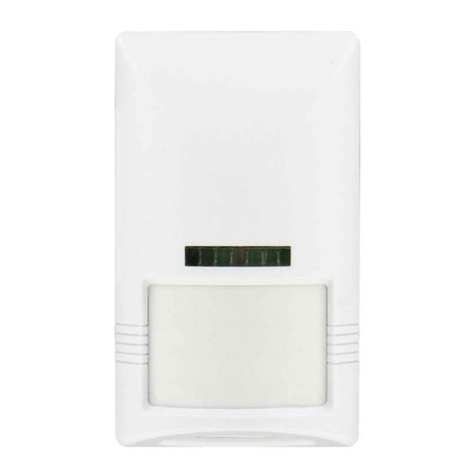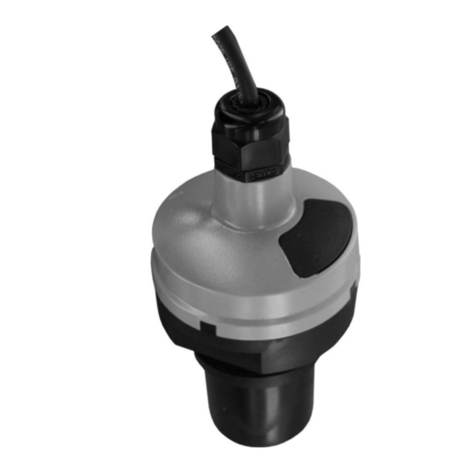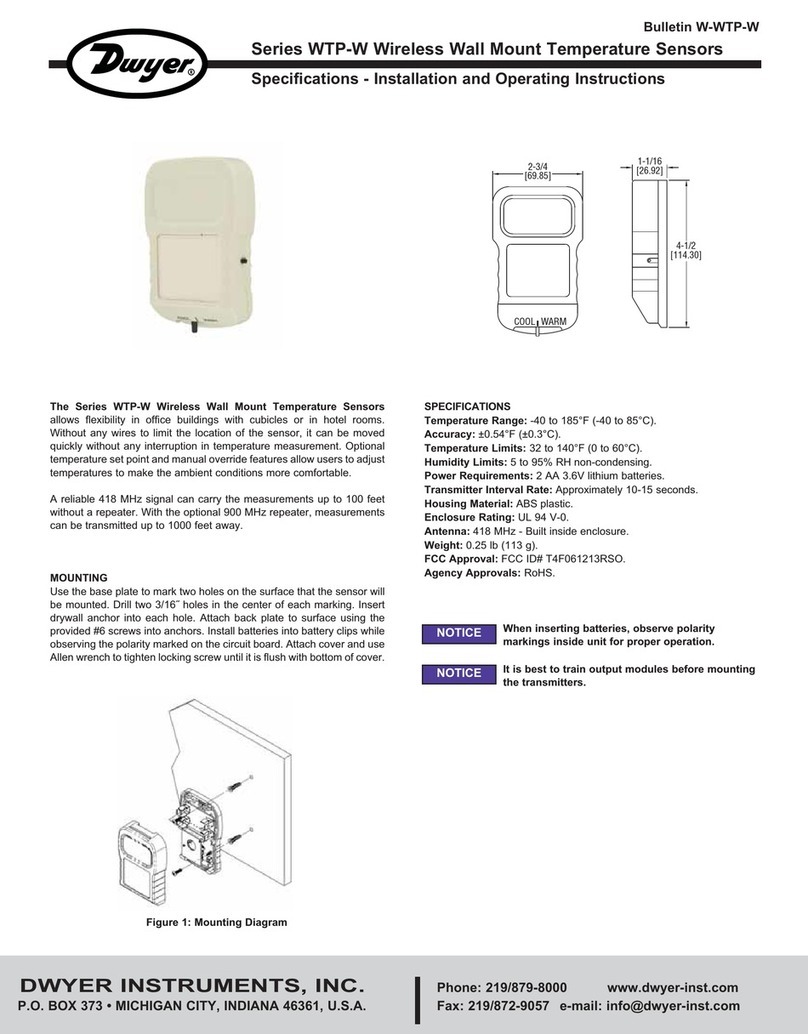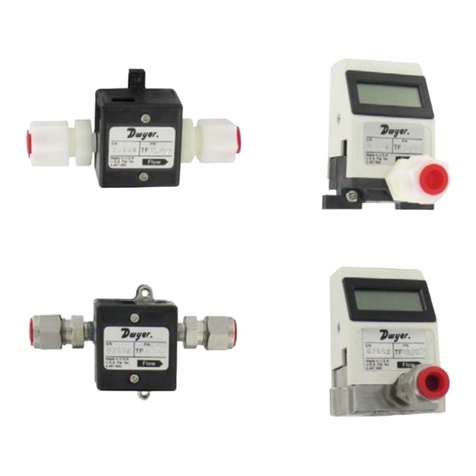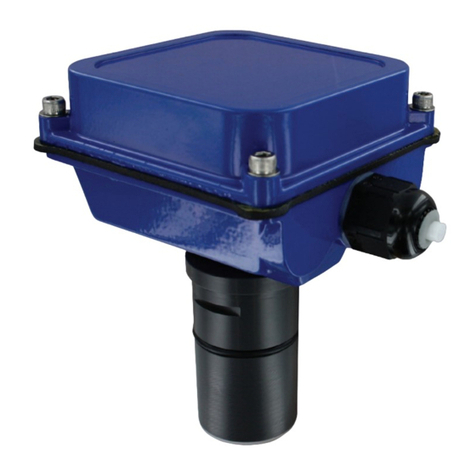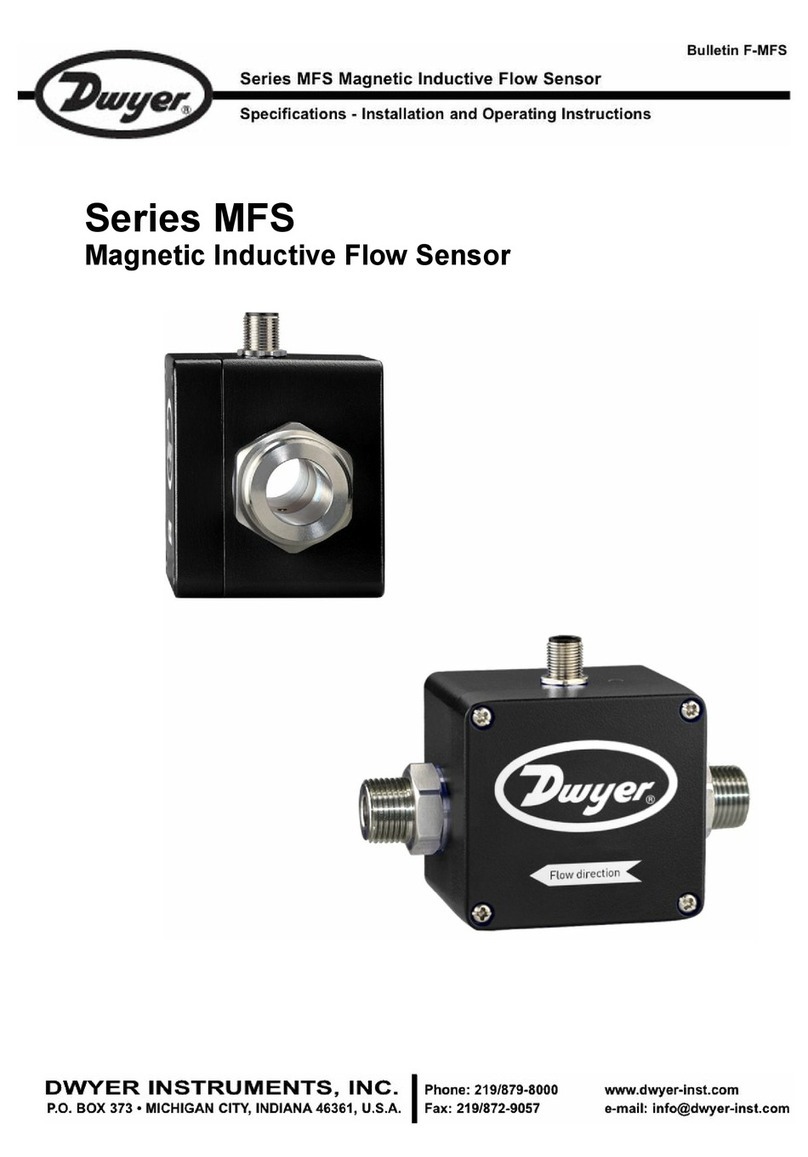
©Copyright 2010 Dwyer Instruments, Inc. Printed in U.S.A. 2/10 FR# R6-443398-00
DWYER INSTRUMENTS, INC.
Phone: 219/879-8000 www.dwyer-inst.com
P.O.
BOX
373
•
MICHIGAN
CITY,
INDIANA
46361,
U.S.A.
Fax:
219/872-9057
e-mail:
[email protected]STORAGE AND CLEANING
The sensor lens is the most delicate part of the
Occupancy Sensor. The lens should be kept clean at all
times, care should be taken when cleaning the lens using
only a soft cloth or cotton swab with water or medical
alcohol. Allow the lens to fully dry before using the sensor.
The sensor should be installed or stored in an area of
room temperature between -4 and 140ºF (-20 to 60ºC).
MAINTENANCE
After final installation of the unit, no routine maintenance
is required. The Model OSC-200 is not field serviceable
and should be returned if repair is needed (field repair
should not be attempted and may void warranty). Be sure
to include a brief description of the problem plus any
relevant application notes. Contact customer service to
receive a return goods authorization number before
shipping.
1-Minute Warning Mode
During this mode, the sensor searches for any movement
for one minute after the Relay On Delay Mode.
If occupancy is detected at any point within that one
minute, the output device is activated and the sensor
enters Relay Off Delay Mode.
If occupancy is not detected in that one-minute time
frame, the sensor enters back into standby mode.
Relay Off Delay Mode
During this mode, the sensor’s output is activated for a
preset period of time.
Once this preset time interval is up, the output device
powers off. However, the relay off delay timer will reset
with each motion detection.
This Relay Off Delay Mode allows for energy conservation
by eliminating unnecessary running of the HVAC system.
Occupancy detection may be affected if the unit is
operated within radio frequency electromagnetic field
strength of approximately 3 volts per meter, but the
performance of the instrument will not be permanently
affected.
NOTICE
H-21-OSC:TEMPLATE 2/5/10 11:12 AM Page 4
